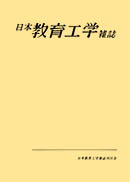Volume 21, Issue 2
Displaying 1-10 of 10 articles from this issue
- |<
- <
- 1
- >
- >|
-
Article type: Cover
1997 Volume 21 Issue 2 Pages Cover1-
Published: September 20, 1997
Released on J-STAGE: October 20, 2017
Download PDF (29K) -
Article type: Cover
1997 Volume 21 Issue 2 Pages Cover2-
Published: September 20, 1997
Released on J-STAGE: October 20, 2017
Download PDF (29K) -
Article type: Article
1997 Volume 21 Issue 2 Pages 75-82
Published: September 20, 1997
Released on J-STAGE: October 20, 2017
Download PDF (759K) -
Article type: Article
1997 Volume 21 Issue 2 Pages 83-92
Published: September 20, 1997
Released on J-STAGE: October 20, 2017
Download PDF (1024K) -
Article type: Article
1997 Volume 21 Issue 2 Pages 107-117
Published: September 20, 1997
Released on J-STAGE: October 20, 2017
Download PDF (856K) -
Article type: Article
1997 Volume 21 Issue 2 Pages 119-128
Published: September 20, 1997
Released on J-STAGE: October 20, 2017
Download PDF (1119K) -
Article type: Article
1997 Volume 21 Issue 2 Pages 129-141
Published: September 20, 1997
Released on J-STAGE: October 20, 2017
Download PDF (1219K) -
Article type: Appendix
1997 Volume 21 Issue 2 Pages App1-
Published: September 20, 1997
Released on J-STAGE: October 20, 2017
Download PDF (24K) -
Article type: Cover
1997 Volume 21 Issue 2 Pages Cover3-
Published: September 20, 1997
Released on J-STAGE: October 20, 2017
Download PDF (29K) -
Article type: Cover
1997 Volume 21 Issue 2 Pages Cover4-
Published: September 20, 1997
Released on J-STAGE: October 20, 2017
Download PDF (29K)
- |<
- <
- 1
- >
- >|
